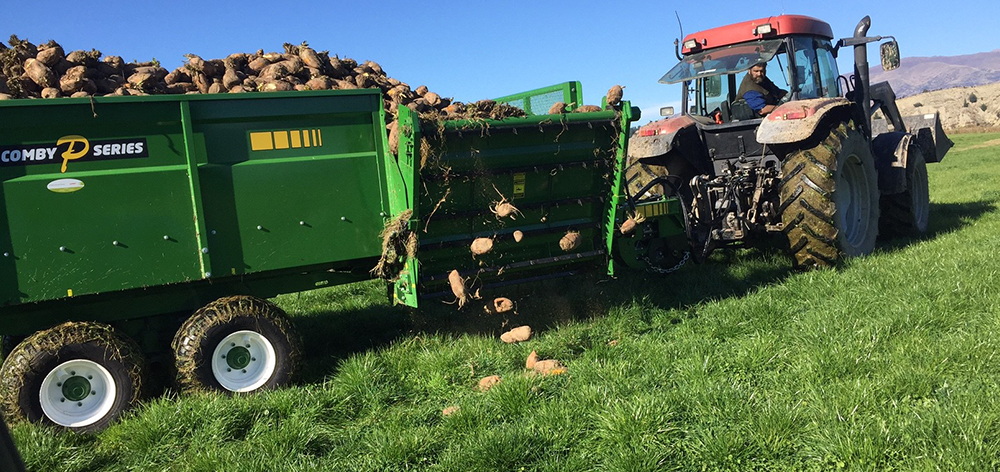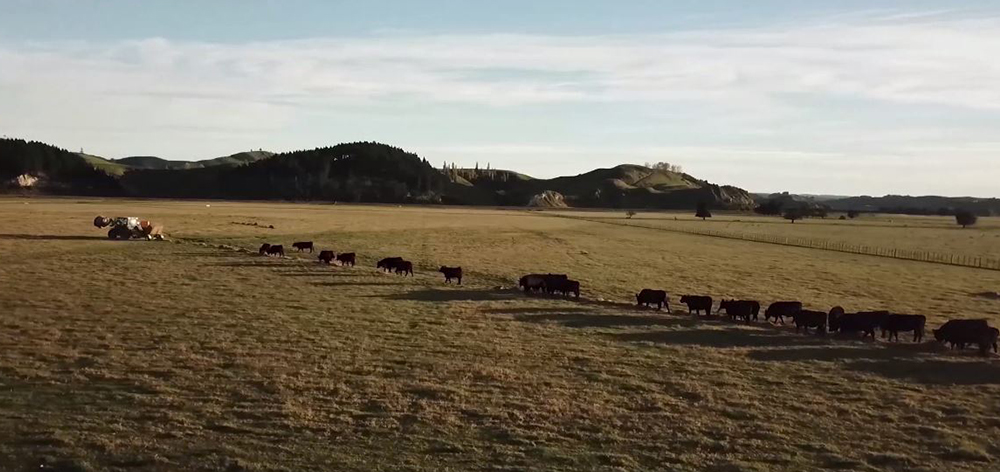What does the future of winter grazing look like?
Recently, the New Zealand Government released the action for healthy waterways package which establishes new requirements for winter grazing management practices. This new regulation will come into effect next year. Although the new standards are applying in New Zealand only, a lot of countries around the world are in the process of pushing for similar farming practices in an attempt to protect the environment and waterways on a larger scale but also to respond and mitigate public concerns about animal welfare.
Note: This article is not to debate the effectiveness nor the impacts of these regulations but to share some insights on some of the techniques we’re seeing farmers adopt around the globe to enter a sustainable grass-fed farming model.
There is no golden trick in the approach of wintering strategies as it largely depends on a range of factors such as soil type, crop rotation, climate, slope etc. However, Hustler’s field consultants encountered many different practices around the world over the years and here is a compilation of the best tips that could be suitable for your farm.
Adopt rotational grazing practices
Although it is difficult to graze animals in winter anywhere in the world depending on the weather, it is possible to extend the grazing period as much as possible with a rotational grazing plan. It is typical for stock to stay consistently on the same grass or crop paddock over winter. This technique is damaging to the soil, causing erosion and an excessive concentration of nitrogen and compaction. Although it is widely used, this practice is not sustainable in the long term as it has a negative environmental impact, but causes infertile land that will not be able to be planted (pasture or crop) in the years to come – not ideal for your children who take over your farm when you retire! Back fencing, practising on/off grazing, and adverse weather management are all management techniques that can be used to mitigate soil damage. If you want to know more, our North America field consultant Lance Paskewitz, who is also a livestock nutrition specialist, wrote an article about rotational grazing.

Feed out your crops instead of grazing them
New winter grazing management rules in New Zealand are limiting the surface area being grazed (maximum of 50ha or 10% of the property, whichever is the greatest) and the cropped paddock has a slope of 10% or less (doesn’t apply for permanent pastures). If you are farming in New Zealand or in other parts of the world where grazing fodder beet isn’t an option anymore, you can consider feeding out fodder beet instead of moving to another type of crop. Growing fodder beet remains a cheaper option, especially if you are already equipped to grow fodder beet. In addition, fodder beet is rich in energy but low in protein and cellulose. It also has a small size (half the size of other fodder), which improves the intake of the ration. Our clients use our “feed-out-anything” Combi wagons that will deliver hay bales, baleage, pit silage all sorts of crops, including fodder beet, alongside any other supplementary feed. Being feed self-sufficient with no limitation on the variety of feed produced on-farm can help to anticipate the evolution of farming regulations, but it is true that you have to think twice before choosing your feed out gear. Our field consultants are happy to have a chat and talk you through your options while helping to develop a feeding plan that will work for you. In the meantime, you can watch the video testimonial of Adam Atkinson, UK using a Hustler Combi CM136 on his organic dairy operation in the United Kingdom.

Forget about hay rings/wagons
Soil compaction is often spoken about in relation to cropland and large machinery but its often the case in pastures. This can be caused by driving in the same spots consistently or even by overcrowding certain areas of the pasture with livestock. One of the most common causes is hay rings and hay wagons. This method of feeding livestock, over against the method of a daily windrow of hay, can “save time” but it certainly does some seriously consequential damage to the pastures! It brings a serious amount of concentrated hoof traffic to that area. One of two things will happen: if the drainage is good, you will get hard compacted soil that grows nothing; if the drainage is bad, you will get a large mudhole that only grows weeds and other invasive species. That is why you often see large black circles in some pastures from satellite images – nothing good is growing there. In contrast to that, rotational grazing and windrow feeding are some of the best management tools we can use to systematically move our livestock to a new area every day. This has the twofold positive effects of hoof-aeration (over against soil compaction) and evenly distributed manure and urine which actually fertilize your forages rather than damaging them.

Reseed your paddocks as early as you can
Planting a new crop or pasture as soon as possible after grazing is often recommended. This can prevent nutrient run-off because the new plants soak the nutrients up from the soil. However, prompt re-sowing may not always be practical due to soil temperatures, soil moisture being too high to get machinery on or the timing of the next crop. Trialing different crops at different times may be needed, such as fodder beet (with final grazing early winter) sown into oats for oat silage cut in spring. For permanent pasture, regular re-seeding can be very expensive. A way to mitigate the costs and to space out the time intervals between each reseeding session can be found thanks to bale feeding. You can improve your pasture systematically feeding the cows right on the ground. Ideally, feeding in a new part of the pasture every day in a long narrow windrow gives every animal equal access to feed and the hay bales drop their seeds into the ground in the process. Your whole pasture can be reseeded for (virtually) free and with no time (except the time you are already spending in feeding out your livestock anyway).

Before you go, have a look at Ted Miller’s story about how he produces milk in an environmentally and economically sustainable fashion, helped by a Hustler’s trailed chainless bale feeder.
Subscribe to this #FeedGrassForGood blog on the link below to see future articles on effective outdoor winter-grazing tips when farming in conditions dealing with snow cover in a grass-fed feeding program.


























